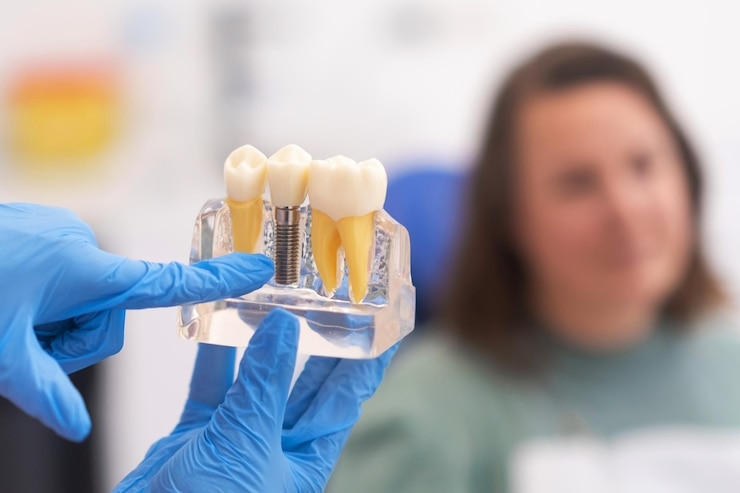When it comes to restoring missing teeth, dental implants have become a trusted and highly effective solution. However, while many people understand the concept of an implant as a replacement for a lost tooth, fewer are familiar with the components that make up the full implant system. One of the most critical parts of this system is the abutment—a small yet essential connector that plays a vital role in the success and function of your implant. Whether you're speaking with your trusted dentist in Fullerton about your options or simply trying to educate yourself before a procedure, knowing what the abutment is (and what it does) can help you make informed decisions about your oral health.
What is a Dental Implant?
Before diving into the specifics of the abutment, it’s helpful first to understand the overall structure of a dental implant. A dental implant is made up of three main parts:
The Implant Post – A titanium or zirconia screw that is surgically embedded into the jawbone. It functions as the artificial root for the new tooth.
The Abutment – The middle piece connects the implant post to the visible crown.
The Crown – The artificial tooth is designed to look and function like your natural teeth.
Each component plays a unique role, but the abutment is the crucial link that ensures stability and alignment between the implant and the crown.
The Role of the Abutment
The abutment serves as the connector between the dental implant post and the crown. Once the implant post has fused with the jawbone through a process known as osseointegration, the abutment is attached to the post. This is done during a minor surgical procedure once the implant site has healed, typically several months after placing the post.
Here’s what the abutment does:
- Acts as a support for the crown or other prosthetic restoration.
- Provides a secure fit between the crown and the implant, ensuring long-term stability.
- Protects the implant post from bacteria and debris by creating a sealed structure once the crown is placed.
The abutment can be made from various materials such as titanium, zirconia, or gold, and it is custom-made to suit the shape of your mouth and the design of the final crown.
How is the Abutment Placed?
Abutment placement is typically done in an outpatient setting under local anesthesia. After the implant post has fully integrated with the bone, your dentist will:
- Reopen the gum tissue to expose the implant.
- Attach the abutment securely to the implant post.
- Close the gum tissue around, but not over, the abutment so that it protrudes slightly above the gum line.
In some cases, a healing abutment may be used temporarily to guide the healing of the gum tissue before the permanent abutment and crown are placed.
Conclusion
Though often overlooked, abutment is vital to a dental implant in Fullerton. It’s the bridge that connects the sturdy foundation of the implant post with the visible crown that completes your smile. Without it, the entire restoration process wouldn’t be possible. By learning more about this small yet significant component, you’ll understand the dental implant process more clearly and be better prepared for conversations with your dental care provider. Talk to your dentist if you’re considering implants and want to know how the abutment fits into your personalized treatment plan.
